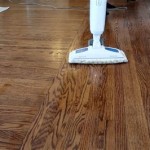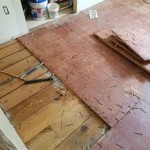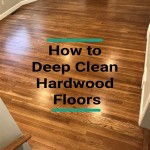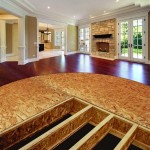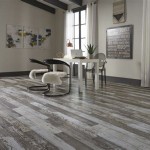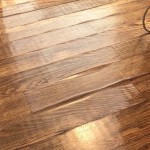Laminate Flooring vs. Engineered Wood
Choosing between laminate and engineered wood flooring can be a daunting task. Both offer appealing aesthetics and practical benefits, but understanding their core differences is crucial for making an informed decision. This article provides a comparative analysis of laminate and engineered wood flooring, focusing on key aspects to help clarify the best option for various needs and budgets.
Construction and Composition
Laminate flooring is constructed using multiple layers, typically including a wear layer, decorative layer, core layer, and backing layer. The wear layer provides scratch and stain resistance, while the decorative layer mimics the appearance of wood or other materials. The core layer, usually made of high-density fiberboard (HDF), provides stability and moisture resistance. The backing layer adds further structural integrity.
Engineered wood, on the other hand, is composed of a thin veneer of real hardwood layered over a core of plywood or high-density fiberboard. This construction combines the authentic look and feel of solid hardwood with enhanced stability and resistance to warping.
Appearance and Aesthetics
Laminate flooring offers a wide range of design options, mimicking various wood species, tile patterns, and even stone finishes. Advancements in printing technology allow for incredibly realistic visuals, often making it difficult to distinguish laminate from genuine hardwood at first glance. However, the textured surface may not replicate the tactile experience of real wood.
Engineered wood, with its real wood veneer, provides the authentic look and feel of solid hardwood. The natural variations in grain and color contribute to a unique and luxurious aesthetic. The surface can be textured or smooth, offering a range of tactile experiences.
Durability and Maintenance
Laminate flooring is known for its exceptional durability, resisting scratches, dents, and stains effectively. Its wear layer provides robust protection against daily wear and tear, making it suitable for high-traffic areas and homes with pets or children. Cleaning is typically straightforward, requiring regular sweeping or vacuuming and occasional damp mopping.
Engineered wood, while durable, is generally less resistant to scratches and dents compared to laminate. The hardness of the wood veneer influences its durability. Regular cleaning and proper maintenance, including the use of appropriate cleaning products, are essential for preserving its appearance. Spills should be wiped up promptly to prevent staining or damage.
Installation
Laminate flooring is renowned for its easy installation process. Most laminate products feature a click-lock system, allowing planks to be easily interlocked without the need for glue or nails. This makes it a suitable option for DIY installations, potentially saving on installation costs.
Engineered wood can be installed using various methods, including nailing, gluing, or floating. The specific installation method depends on the product and the subfloor. While some engineered wood products offer click-lock systems for easier installation, others may require professional installation.
Cost
Laminate flooring is generally more budget-friendly than engineered wood. The manufacturing process and materials used in laminate production contribute to its lower cost. This affordability makes it an attractive option for homeowners seeking cost-effective flooring solutions without compromising on aesthetics.
Engineered wood, being constructed with real hardwood, typically carries a higher price tag than laminate. The species of wood used for the veneer influences the overall cost. However, engineered wood offers a more cost-effective alternative to solid hardwood while still providing the authentic look and feel.
Moisture Resistance
Laminate flooring offers good resistance to moisture, making it suitable for areas like kitchens and bathrooms. The core layer, typically HDF treated with resins, provides a barrier against moisture penetration. However, prolonged exposure to standing water can still cause damage.
Engineered wood exhibits varying levels of moisture resistance depending on the core material and the thickness of the veneer. While more resistant to moisture than solid hardwood, it's generally less moisture-resistant than laminate. Excessive moisture can lead to warping or swelling, making it less suitable for high-moisture areas.

Engineered Flooring Vs Laminate Everything You Need To Know Forbes Home

Engineered Wood Flooring Vs Laminate Albany Woodworks

Laminate Flooring Vs Engineered Hardwood Lifecore

Engineered Vs Laminate Flooring Which Should You Choose Palmers Green Estate Agents Anthony Webb Southgate Winchmore Hill

Hardwood Vs Laminate Engineered Floors What S The Difference Clean My Space

Engineered Hardwood Vs Laminate

Wood Flooring Laminate Vs Engineered Real Kitchencrate

Engineered Wood Vs Laminate Flooring What S The Difference Greyspace

Solid Vs Engineered Laminate What S The Difference American Heritage Hardwood Flooring

Engineered Hardwood Vs Laminate Flooring
